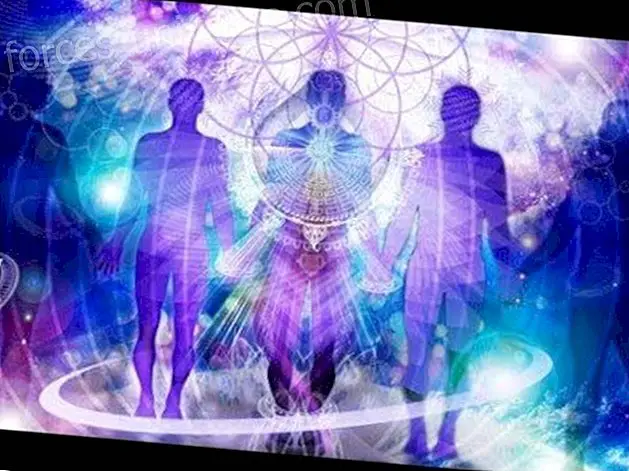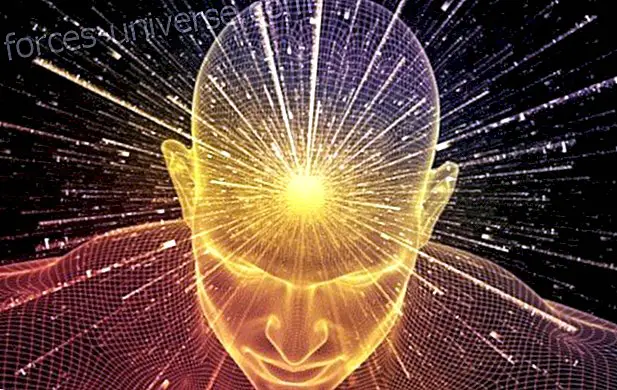 The Global Consciousness Project led by Dr. Roger Nelson of Princeton University in which more than 75 scientists from 41 countries participate for more than ten years studying the effects of Consciousness on the human being. If it is true that quantum physics rests in the order implied -CONCIENCE- listed by Professor David Bohm, it makes sense that there are scientists developing experiments that throw evidence on this relationship. The following article provides information on the work of Dr. Nelson. The official link of the project that is still ongoing for those interested in checking the latest research in this regard is also provided in the sources mentioned above. We are at the beginning of a new paradigm and possibly these studies, rather than giving us clear answers, indicate the first steps towards the journey of man overcoming his own limits.
The Global Consciousness Project led by Dr. Roger Nelson of Princeton University in which more than 75 scientists from 41 countries participate for more than ten years studying the effects of Consciousness on the human being. If it is true that quantum physics rests in the order implied -CONCIENCE- listed by Professor David Bohm, it makes sense that there are scientists developing experiments that throw evidence on this relationship. The following article provides information on the work of Dr. Nelson. The official link of the project that is still ongoing for those interested in checking the latest research in this regard is also provided in the sources mentioned above. We are at the beginning of a new paradigm and possibly these studies, rather than giving us clear answers, indicate the first steps towards the journey of man overcoming his own limits.
“In the depths of the basement of the dusty bookstore of a university in Edinburgh lies a small black box, about the size of two packs of cigarettes together, which generates random numbers in an endless flow.
At first glance it is a little remarkable device. Coated with metal, it contains inside a microchip no more complex than those found in modern pocket calculators.
But, according to a growing list of scientists, this box has extraordinary powers. It is, according to them, the "eye" of a machine that seems to be able to venture into the future and predict major world events.
The machine, apparently, felt the 9/11 attacks on the World Trade Center four hours before they occurred - but in the fervent wave of conspiracy theories at the time, these claims were rejected by skeptics. But last December, it also seemed to foresee the Asian tsunami just before the underwater earthquake precipitated the tragedy.
Now, even those who doubted have recognized that here we have a small box with seemingly inexplicable powers.
"It's an amazing matter, " says Dr. Roger Nelson, emeritus researcher at Princeton University in the United States, who is responsible for the research project following the black box phenomenon. “We are taking the first steps in the process of trying to understand what is happening with this. So far we are going blind. ”Dr. Nelson's research, with the name of Global Consciousness Project (now Noosphere), was initially hosted by Princeton University and is focused on one of the most extraordinary experiments of all time. It aims to detect if all humanity shares a single subconscious mind in which we can all probe without being aware of it.
And machines like Edinburgh's black box have launched a delicious possibility: that scientists may have involuntarily discovered a way to predict the future. Although many will consider the intentions of the project little more than a fool's dream, it has attracted a plethora of 75 respected scientists from 41 different countries. Princeton researchers - where Einstein spent much of his career - work alongside scientists from universities in Britain, the Netherlands, Switzerland and Germany. The project is also the most rigorous and longest-running research ever conducted on the potential powers of the paranormal.
"Very often, paranormal phenomena evaporate if you study them long enough, " says physicist Dick Bierman of the University of Amsterdam. “But this is not happening in the Global Consciousness Project. The effect is real. The only dispute is about its meaning. ”The project has its roots in the extraordinary work of Professor Robert Jahn of Princeton University in the late 1970s. He was one of the first modern scientists to take paranormal phenomena seriously. .
Intrigued by things such as telepathy, telekinesia - the supposed psychic power to move objects without the use of physical force - and extrasensory perception, he decided to study the phenomenon using the most up-to-date technology available then. One of those new technologies was a humble-looking black box known as the Random Event Generator (REG). It used computational technology to generate two numbers - a one and a zero - in a totally random sequence, an electronic face or cross spice.
The pattern of ones and zeros - or "faces" and "crosses" - was then printed as a graphic. The laws of probability dictate that generators should yield equal numbers of zeros and ones - which would be represented in the graph as a flat line. Any deviation from those numbers would show a smooth upward curve. During the last 70s, Professor Jahn decided to investigate whether, with the sole power of human thought, somehow it could interfere with the usual machine readings. He approached street pedestrians and asked them to concentrate their minds on their number generator. In effect, I asked them to try to make more "faces" appear than "crosses."
 It was an absurd idea at the time. The results, however, were surprising and have never been satisfactorily explained. Again and again, completely ordinary people proved that their minds could influence the machine and produce significant fluctuations in the graph, "forcing it" to produce unequal amounts of ones and zeros. According to all the laws known to science, this should not have happened, but it did. And it keeps happening.
It was an absurd idea at the time. The results, however, were surprising and have never been satisfactorily explained. Again and again, completely ordinary people proved that their minds could influence the machine and produce significant fluctuations in the graph, "forcing it" to produce unequal amounts of ones and zeros. According to all the laws known to science, this should not have happened, but it did. And it keeps happening.
Dr. Nelson, also working at Princeton University, extended Professor Jahn's work by bringing random number generating machines to meditation groups, which were very popular in the United States at the time. Again, the results were amazing. The groups were able, collectively, to cause dramatic alterations in number patterns. Since then, Dr. Nelson was hooked. Using the Internet, he connected up to 40 random number generators from around the world to his laboratory computer in Princeton. Running constantly, day by day, generating millions of different pieces of data. Most of the time, the resulting graph on his computer showed more or less a flat line.
But on September 6, 1997, something extraordinary happened: the graphic shot up, registering a sudden and massive alteration in the sequence of numbers while their machines were everyone began to record huge deviations from the norm. The day was also of historical importance for another reason, according to estimates, one billion people watched the funeral of Princess Diana of Wales on television.
Dr. Nelson was convinced that the two facts had to be related in some way.
Could I have detected a totally new phenomenon? Could the emotional flow of millions of people be able to influence the output of their REGs? If so, how?
Dr. Nelson did not know how to explain it.
So, in 1998, he brought together scientists from around the world to analyze their findings. They, too, were surprised, and decided to extend and deepen the work of Professor Jahn and Dr. Nelson. The Global Consciousness Project was born.
Since then, the project has spread massively. A total of 65 Eggs (as the generators have been called) have been recruited in 41 countries, to act as the eyes of the project, and the results have been as amazing as inexplicable. Because during the course of the experiment, the Eggs have felt a whole series of great world events at the time they happened, since the NATO bombing in Yugoslavia, through the tragedy of the Krusk submarine, until the 2000 suspended elections in the United States. The Eggs also regularly detect large global celebrations, such as the New Year party.
But the project launched its greatest enigma on September 11, 2001. While the world stood still and watched the horror of the terrorist attacks in New York, something strange was happening to the Eggs. Not only had the attacks been recorded as it had actually happened, but the characteristic alteration in the number pattern had begun four hours. before the planes had hit the Twin Towers. They had apparently detected that an event of historical importance was about to happen before the terrorists had even embarked on the planes.
"Then I knew we had a lot of work ahead of us, " says Dr. Nelson.
In the last weeks of December of last year, the machines went crazy again. Twenty-four hours later, an earthquake under the Indian Ocean caused a tsunami that devastated Southeast Asia, and took the lives of a quarter of a million people. Could the Global Consciousness Project really predict the future?
The clinicians will specify, with absolute right, that there is always some global event that could be used to explain the moment when the Egg machines behave erratically. After all, our world is full of wars, disasters and terrorist acts, as well as the occasional global celebrations. Are scientists simply trying to hard detect patterns from their raw data?
The team after the project insists no. They claim that using rigorously scientific techniques and advanced mathematics it is possible to exclude such random connections.
“We are perfectly willing to discover that we have made mistakes, ” says Dr. Nelson. "But we have not been able to find any, and no one else has been able to." Our data clearly shows that the chances of obtaining those results by chance are one in a million.
 Professor Chris French, a psychologist and famous skeptic at Goldsmith College in London, says: “The Global Consciousness Project has generated some very intriguing results that cannot be easily dismissed. I am involved in a similar job to see if we get the same results. We have not managed to do it yet, but it is only a preliminary experiment. The jury is still together. ”Although it may seem strange, however, there is nothing in the laws of physics that makes it impossible to see the future.
Professor Chris French, a psychologist and famous skeptic at Goldsmith College in London, says: “The Global Consciousness Project has generated some very intriguing results that cannot be easily dismissed. I am involved in a similar job to see if we get the same results. We have not managed to do it yet, but it is only a preliminary experiment. The jury is still together. ”Although it may seem strange, however, there is nothing in the laws of physics that makes it impossible to see the future.
It is possible - in theory - that time does not move only forward, but also backward. And if time acts as the ebb and flow of sea waves, it might be possible to anticipate major world events. We could, in effect, be "remembering" things that have taken place in our future.
"There is a lot of evidence that time could be running backwards, " says Professor Bierman of the University of Amsterdam. "And if it is possible to happen in physics, then it can also happen in our minds." In other words, Professor Bierman believes that we would all be able to see in the future, if we could briefly access the hidden power of our minds. And there is a shocking group of evidence to support this theory.
Dr. John Hartwell, working at the University of Utrecht in the Netherlands, was the first to uncover evidence that people could feel the future. In the mid-1970s, he connected people to a medical scanner so that he could study their brain wave patterns. He began by showing them a sequence of provocative vignettes. When the drawings were shown, the machines recorded the brain waves of the subject while reacting strongly to the images they were shown. This was to be expected. Much less easy to explain was the fact that, in many cases, those dramatic patterns began to register a few seconds before each of the images was even shown.
It was as if the cases studied by Dr. Hartwell were somehow seeing the future, and detecting when the next shocking image was to be shown.
It was something extraordinary - and apparently inexplicable.
But another 15 years had to pass before anyone delved deeper into Dr. Hartwell's work, when Dean Radin, a researcher based in the United States, connected people to a machine that measured his skin's resistance to electricity. It is known that it fluctuates with our emotions - in fact, it is the principle that underlies lie detectors.
Radin repeated Dr. Hartwell's "response to an image" experiments while measuring skin resistance. Again, people began to react a few seconds before the provocative images were shown. This was clearly impossible, or so he thought, so he repeated the experiments. And he got the same results.
"I didn't believe it either, " says Professor Bierman. “So I repeated the experiment myself and got the same results. I was baffled. After this I began to think more deeply about the nature of time. ”To make things even more intriguing, Professor Bierman says that other important laboratories have produced similar results, but have not yet been made public.
"They don't want to be ridiculed, so they won't publish their results, " he says. “So I am trying to persuade all of them to publish their results at the same time. At least that will make the ridiculous spread more mild! ”But if Professor Bierman is right, then the experiments are not a matter of laughter. They could help offer a solid scientific basis for strange phenomena such as "deja vu", intuition and a whole set of other curiosities that we have all experienced from time to time.
They can also open a much more interesting possibility - that one day we will be able to enhance psychic powers using machines that can "tune in" with our subconscious mind, machines like Edinburgh's little black box. Just as we have built mechanical devices to replace muscle strength, could we one day build a device to enhance and interpret our hidden psychic abilities?
Dr. Nelson is optimistic - but not in the short term. “We might be able to predict that a great global event will happen. But we would not know exactly what would happen or where it will happen, ”he says. "Look at it this way - we still don't have a machine that we can sell to the CIA."
But for Dr. Nelson, talking about such psychic machines - with the potential to detect global catastrophes or terrorist threats - is much less important than the implications of his work in terms of the human race. Because what his experiments seem to show is that while we can operate as individuals, it seems that we also share something much, much bigger - a global consciousness. Some will call it the mind of God.
"They teach us to be individualistic monsters, " he says. “We are directed by society to separate ourselves from others. That is not right". We may be connected much more intimately than we think. ”
Source:
http://noosphere.princeton.edu/results.html
http://www.gskbyte.net/2007/03/28/el-proyecto-de-consciencia-global/
http://noosphere.princeton.edu
http://medicinacuantica.net/?p=2244

 The Global Consciousness Project led by Dr. Roger Nelson of Princeton University in which more than 75 scientists from 41 countries participate for more than ten years studying the effects of Consciousness on the human being. If it is true that quantum physics rests in the order implied -CONCIENCE- listed by Professor David Bohm, it makes sense that there are scientists developing experiments that throw evidence on this relationship. The following article provides information on the work of Dr. Nelson. The official link of the project that is still ongoing for those interested in checking the latest research in this regard is also provided in the sources mentioned above. We are at the beginning of a new paradigm and possibly these studies, rather than giving us clear answers, indicate the first steps towards the journey of man overcoming his own limits.
The Global Consciousness Project led by Dr. Roger Nelson of Princeton University in which more than 75 scientists from 41 countries participate for more than ten years studying the effects of Consciousness on the human being. If it is true that quantum physics rests in the order implied -CONCIENCE- listed by Professor David Bohm, it makes sense that there are scientists developing experiments that throw evidence on this relationship. The following article provides information on the work of Dr. Nelson. The official link of the project that is still ongoing for those interested in checking the latest research in this regard is also provided in the sources mentioned above. We are at the beginning of a new paradigm and possibly these studies, rather than giving us clear answers, indicate the first steps towards the journey of man overcoming his own limits. 




